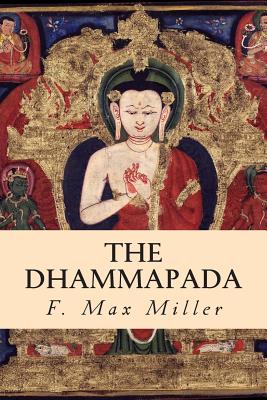The Dhammapada

The Dhammapada
The Dhammapada-a Collection of Verses; Being One of the Canonical Books of the Buddhists is a Buddhist scripture and a collection of sayings of the Buddha in verse form and one of the most widely read and best known Buddhist scriptures. The original version of the Dhammapada is in the Khuddaka Nikaya, a division of the Pali Canon of Theravada Buddhism. The title, "Dhammapada," is a compound term composed of dhamma and pada, each word having a number of denotations and connotations. Generally, dhamma can refer to the Buddha's "doctrine" or an "eternal truth" or "righteousness" or all "phenomena"; and, at its root, pada means "foot" and thus by extension, especially in this context, means either "path" or "verse" or both. In Tamil language 'Padam' means subject, English translations of this text's title have used various combinations of these and related words. According to tradition, the Dhammapada's verses were spoken by the Buddha on various occasions." By distilling the complex models, theories, rhetorical style and sheer volume of the Buddha's teachings into concise, crystalline verses, the Dhammapada makes the Buddhist way of life available to anyone...In fact, it is possible that the very source of the Dhammapada in the third century B.C.E. is traceable to the need of the early Buddhist communities in India to laicize the ascetic impetus of the Buddha's original words."[9] The text is part of the Khuddaka Nikaya of the Sutta Pitaka, although over half of the verses exist in other parts of the Pali Canon. A 4th or 5th century CE commentary attributed to Buddhaghosa includes 305 stories which give context to the verses. Comparing the Pali Dhammapada, the Gandhari Dharmapada and the Udanavarga, Brough (2001) identifies that the texts have in common 330 to 340 verses, 16 chapter headings and an underlying structure. He suggests that the three texts have a "common ancestor" but underlines that there is no evidence that any one of these three texts might have been the "primitive Dharmapada" from which the other two evolved. The Dhammapada is considered one of the most popular pieces of Theravada literature. A critical edition of the Dhammapada was produced by Danish scholar Viggo Fausboll in 1855, becoming the first Pali text to receive this kind of examination by the European academic community
PRP: 44.56 Lei
Acesta este Prețul Recomandat de Producător. Prețul de vânzare al produsului este afișat mai jos.
40.10Lei
40.10Lei
44.56 LeiLivrare in 2-4 saptamani
Descrierea produsului
The Dhammapada-a Collection of Verses; Being One of the Canonical Books of the Buddhists is a Buddhist scripture and a collection of sayings of the Buddha in verse form and one of the most widely read and best known Buddhist scriptures. The original version of the Dhammapada is in the Khuddaka Nikaya, a division of the Pali Canon of Theravada Buddhism. The title, "Dhammapada," is a compound term composed of dhamma and pada, each word having a number of denotations and connotations. Generally, dhamma can refer to the Buddha's "doctrine" or an "eternal truth" or "righteousness" or all "phenomena"; and, at its root, pada means "foot" and thus by extension, especially in this context, means either "path" or "verse" or both. In Tamil language 'Padam' means subject, English translations of this text's title have used various combinations of these and related words. According to tradition, the Dhammapada's verses were spoken by the Buddha on various occasions." By distilling the complex models, theories, rhetorical style and sheer volume of the Buddha's teachings into concise, crystalline verses, the Dhammapada makes the Buddhist way of life available to anyone...In fact, it is possible that the very source of the Dhammapada in the third century B.C.E. is traceable to the need of the early Buddhist communities in India to laicize the ascetic impetus of the Buddha's original words."[9] The text is part of the Khuddaka Nikaya of the Sutta Pitaka, although over half of the verses exist in other parts of the Pali Canon. A 4th or 5th century CE commentary attributed to Buddhaghosa includes 305 stories which give context to the verses. Comparing the Pali Dhammapada, the Gandhari Dharmapada and the Udanavarga, Brough (2001) identifies that the texts have in common 330 to 340 verses, 16 chapter headings and an underlying structure. He suggests that the three texts have a "common ancestor" but underlines that there is no evidence that any one of these three texts might have been the "primitive Dharmapada" from which the other two evolved. The Dhammapada is considered one of the most popular pieces of Theravada literature. A critical edition of the Dhammapada was produced by Danish scholar Viggo Fausboll in 1855, becoming the first Pali text to receive this kind of examination by the European academic community
Detaliile produsului










